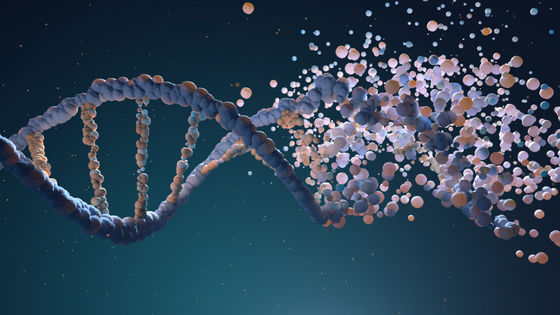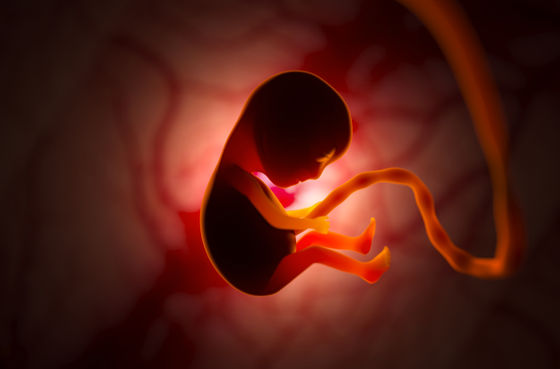`` 8% of human genes are viruses, '' experts, what kind of impact does the ancient viral gene engraved in DNA have on humans?

The pandemic caused by the new coronavirus discovered in December 2019 is still raging in October 2022, but mankind
Humans are 8% virus – how the ancient viral DNA in your genome plays a role in human disease and development
https://theconversation.com/humans-are-8-virus-how-the-ancient-viral-dna-in-your-genome-plays-a-role-in-human-disease-and-development-192322
Retroviruses, such as HIV, inject their genetic material into the host's genome for self-replication. Such a genome, called a ' provirus ,' is not normally passed from parent to offspring. However, some of the viruses that afflicted human ancestors acquired the ability to infect germ cells such as eggs and sperm, and the genes of such viruses are inherited as ' human endogenous retroviruses (HERV) '. inherited to.
According to Aidan Byrne, who is studying HERV at Tufts University in the United States, 8% of the human genome is actually occupied by this HERV, and about 30 types of HERV have been found so far. Similar viruses have colonized the genomes of primates such as chimpanzees and gorillas, as well as humans, suggesting that they were once widespread among these animals.

Previous research has confirmed that HERV genes are activated in diseased tissues such as tumors and in the developmental process of human embryos. Little did I know.
Therefore, Mr. Byrne's research team conducted a study to examine a group of HERVs called 'HML-2' in a database containing the genomes of more than 14,000 samples collected from the whole body. This HML-2 is a relatively recently activated HERV and has been extinct about 5 million years ago, but some proviruses still retain the ability to make viral proteins. I know
As a result of the research team's analysis, it was found that there are 37 HML-2 proviruses that are still active. They also found evidence of activation of at least one of these proviruses in all 54 tissue samples investigated by the research team.
The fact that fragments of ancient viruses are still present in the human genome and capable of synthesizing proteins has attracted considerable attention among researchers. This is because some modern related viruses are known to cause breast cancer and AIDS-like diseases in animals.

Research is underway to determine whether HERV causes disease, but some studies have found virus-like particles by HML-2 in cancer cells. The presence of HERV genetic material in diseased tissues has also been linked to
From this point of view, HERV genes have been used as indicators of diseases, and research has been conducted on therapeutic drugs targeting HERV genes. The results of this study, which confirmed that HERV genetic material and disease are not necessarily directly linked, have emerged.
Studies by Byrne and colleagues also suggest that HERVs may even be beneficial to humans. For example, syncytin , a representative HERV integrated into the human and animal genomes, plays an important role in placental formation. In other words, all mammalian babies born during pregnancy are indebted to this HERV-made protein derived from an ancient virus.

In addition, some studies have shown that mice, cats, sheep, etc. use endogenous retroviruses (ERV) to protect themselves from viruses. These ERVs can no longer synthesize complete virus particles themselves, but when the viruses that are the source of these ERVs invade the host's body, the ERV fragments floating in the cell interfere and the virus is released. It will not be able to self-replicate. Therefore, Mr. Byrne and others believe that HERV that humans have may be useful in the same way.
'Our study reveals previously unknown levels of HERV activity in the human body and raises as many questions as it answers,' said Byrne. Although it is not yet clear whether it is beneficial or by what mechanism it is activated, the search for answers to these questions will reveal unknown functions of ancient viral genes, and may help explain ancient pandemics. We will learn more about the human body that has evolved with remnants.'
Related Posts:
in Science, Posted by log1l_ks







